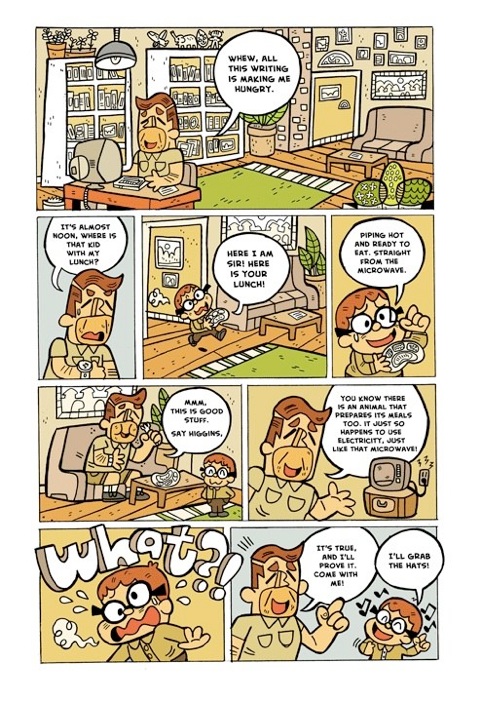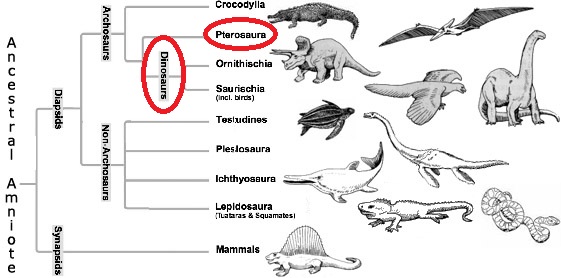 Comics and science have two very important things in common: they’re more fun in a group. As the community here can attest to, reading comics is all the more satisfying when you have a palce for people to talk about all the latest developments. Well science is no different. Put a group of scientists in a room and they’ll probably talk about science. But there is a tangential point to this that both comics and science also share: it’s important to bring in the young and ignorant. The discussion has happened here at iFanboy many times. How do we get young people, or non-comics people, into comics? And I can tell you this also something that gets bandied about the lab too. An essential element to fostering literacy in comics and science is literacy in general is literacy itself. It is important that people, especially children, know how to read and furthermore enjoy the holy hell out of doing so.
Comics and science have two very important things in common: they’re more fun in a group. As the community here can attest to, reading comics is all the more satisfying when you have a palce for people to talk about all the latest developments. Well science is no different. Put a group of scientists in a room and they’ll probably talk about science. But there is a tangential point to this that both comics and science also share: it’s important to bring in the young and ignorant. The discussion has happened here at iFanboy many times. How do we get young people, or non-comics people, into comics? And I can tell you this also something that gets bandied about the lab too. An essential element to fostering literacy in comics and science is literacy in general is literacy itself. It is important that people, especially children, know how to read and furthermore enjoy the holy hell out of doing so.
Well now we have a solution, or least a great first step, and it’s called Reading with Pictures, an anthology put together by Josh Elder with the specific purpose of getting kids into reading through super awesome comics (some of which are about science, cause kids have to learn that in school too!). The book was funded through one of the Kickstarter campaigns that I’d never before contributed too but a fan of my Science… sort of podcast David Precht (also a contributor to the anthology) e-mailed me saying I should give it a look. Like any good scientist, I was skeptical, first of the initial idea of Kickstarter. It sounded like a scam, right? Some dude in Korea, yeah David lives in Korea with his wife who teaches English, is all like “donate to this book, it’ll help kids read comics and stuff,” and I’m just supposed to be on board? Well I thought about it and said, “Screw it, its 15 bucks that might get some kids reading, I’ll give it a shot.” I also thought, “Man, this would be a great topic for a column. HOWEVER, I better reserve judgment until I see the finished product, so I will wait.” Well the wait is over! I’ve now poured over my very own volume of Reading with Pictures and can say I’m mighty impressed.

Much like Conor’s columns on some of the DC animated shows, it takes a special breed of talent to put something together that is undeniably kid-friendly, or dare I even say made-for-kids, and have it still be enjoyable and engaging to adults. I should be quick to point out that this isn’t a science book per se, it’s about reading, being a kid in school, and the act of learning. It is sometimes about science but it isn’t promoting strict science education over anything else. However, it’s still great. Reading it took me back to my own days as an elementary and junior high student facing what at the time seemed like gigantic problems (not to diminish those problems if you currently find yourself there, it’s just another reason this book is for you, not me).
Here’s the truly sinister thing about this book, not only is it determined to get kids to enjoy reading, but it’s packing with some shockingly practical lessons for an observant reader. There’s a story about student coping with the discovery of her own learning disability in a positive way, another about the importance of scientific literacy and even one about the significance of communication of ideas through the marriage of words and images. There were even more than that and I was impressed by the tenacity to strive so many noble goals at once.
I feel like I’m gushing a bit so I will toss out a few criticisms. In the modern comics market admitting that a book is an anthology is almost a criticism in and of itself. I enjoy anthologies but there is often a lack of consistency in the quality of any anthology you happen to get. Personal preference plays a roll but when you have professional comics people telling stories in the same book with amateurs or webcomics artists you’re bound to notice a difference in storytelling style and ability. This is mostly inconsequential but th ere are a few times little things like panel layout or lettering do fall short of perfection. I think this can still be used in a positive way because it can give students an opportunity to attempt to articulate why the lettering on a certain panel doesn’t work as well as another. You can’t do that if every panel is perfect. The other issue, and this one is really unfortunate, is sometimes there’s bad science. I don’t mean bad science like, “a chicken can’t be a ninja,” or “a robot wouldn’t say that” but more like “that is a factually inaccurate statement about reality as we know it to exist.” One story was particularly culpable and the same exercise suggested above could also be used to make kids find the errors themselves, yet a bit of scientific consulting before sending it to the printers would have saved some groans from science-teachers everywhere. (I’ve said it before and I’ll say it again: Pterosaurs are not dinosaurs!)
ere are a few times little things like panel layout or lettering do fall short of perfection. I think this can still be used in a positive way because it can give students an opportunity to attempt to articulate why the lettering on a certain panel doesn’t work as well as another. You can’t do that if every panel is perfect. The other issue, and this one is really unfortunate, is sometimes there’s bad science. I don’t mean bad science like, “a chicken can’t be a ninja,” or “a robot wouldn’t say that” but more like “that is a factually inaccurate statement about reality as we know it to exist.” One story was particularly culpable and the same exercise suggested above could also be used to make kids find the errors themselves, yet a bit of scientific consulting before sending it to the printers would have saved some groans from science-teachers everywhere. (I’ve said it before and I’ll say it again: Pterosaurs are not dinosaurs!)
Ultimately, I'd say it’s worth supporting Reading with Pictures or a similar project. I think it can only help a struggling educational system to engage kids in reading whatever format. Furthermore it can help get kids into comics which is something we all care about for its own merits. I hope this book is financially viable and actually put in some classrooms and/or school libraries. If you’re a teacher or even just have a kid in school I would suggest getting a copy of the book and giving it to your child (but don’t let ‘em hog it, you’ll wanna read it too) so someone can tell me if all this waxing poetic transcends into practicality. Until then, I live in hope that the next generation of students will become voracious readers of all things through the efforts of books like Reading with Pictures.
Ryan Haupt has way too much reading that doesn't involve pictures. His reading does involve diagrams, cause he's expected to read like an adult now. Hear him commiserate with fellow adult readers on his podcast Science… sort of.


I’m all for anything that gets students reading. Especially if it increases their interest in or understanding of art/graphics/comics at the same time.
Your Pterosaurs/Dinosaurs graphic reminds me of something I witnessed last week: A full professor from the History department at my university struggled mightily with a VERY simple Venn Diagram (of her own creation) and embarrassed herself in front of the Provost and Faculty Senate. The point: Make sure you understand something (to the best of your ability) before you present it to the world.
I totally donated $20 to this and it was totally worth it :).